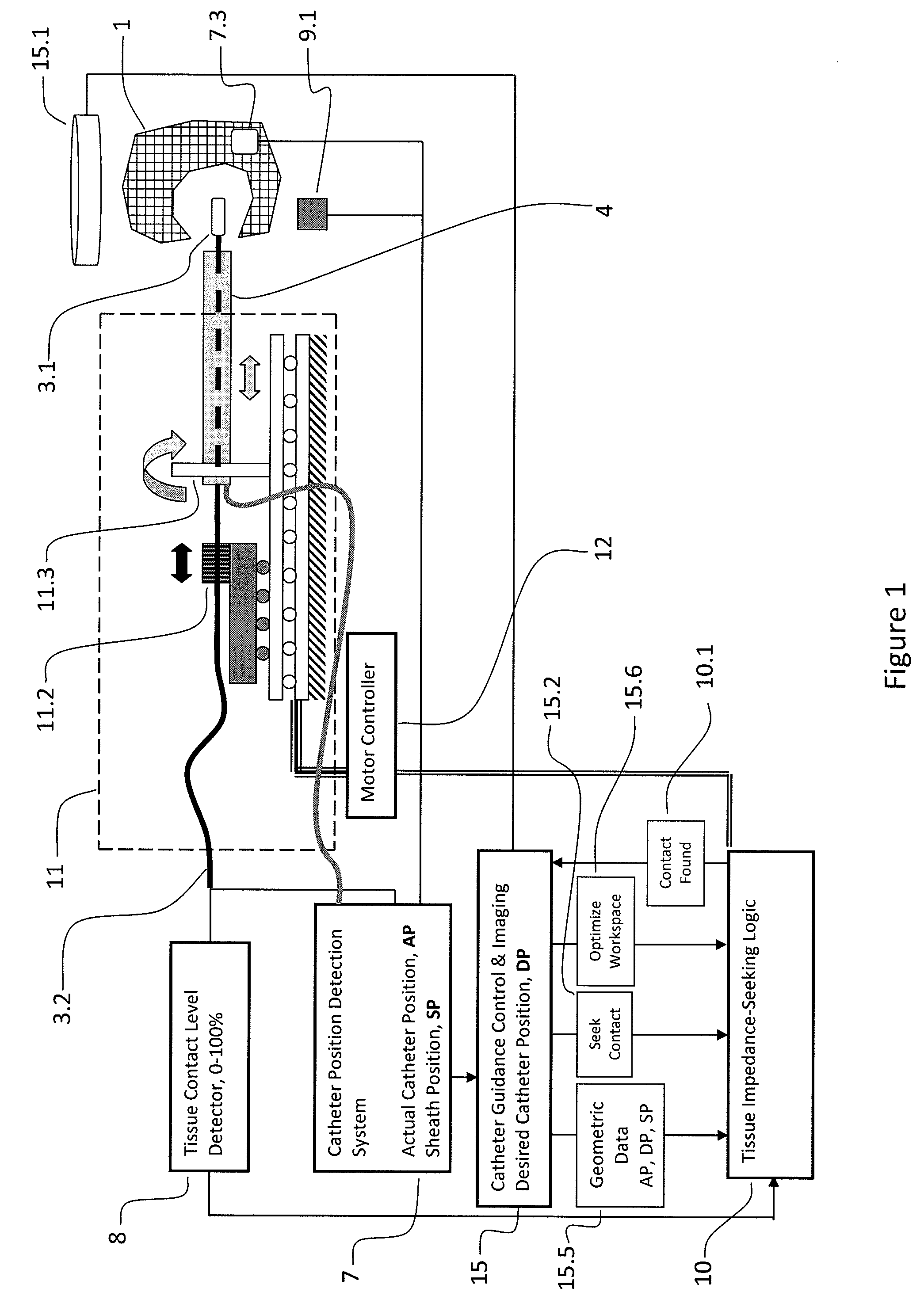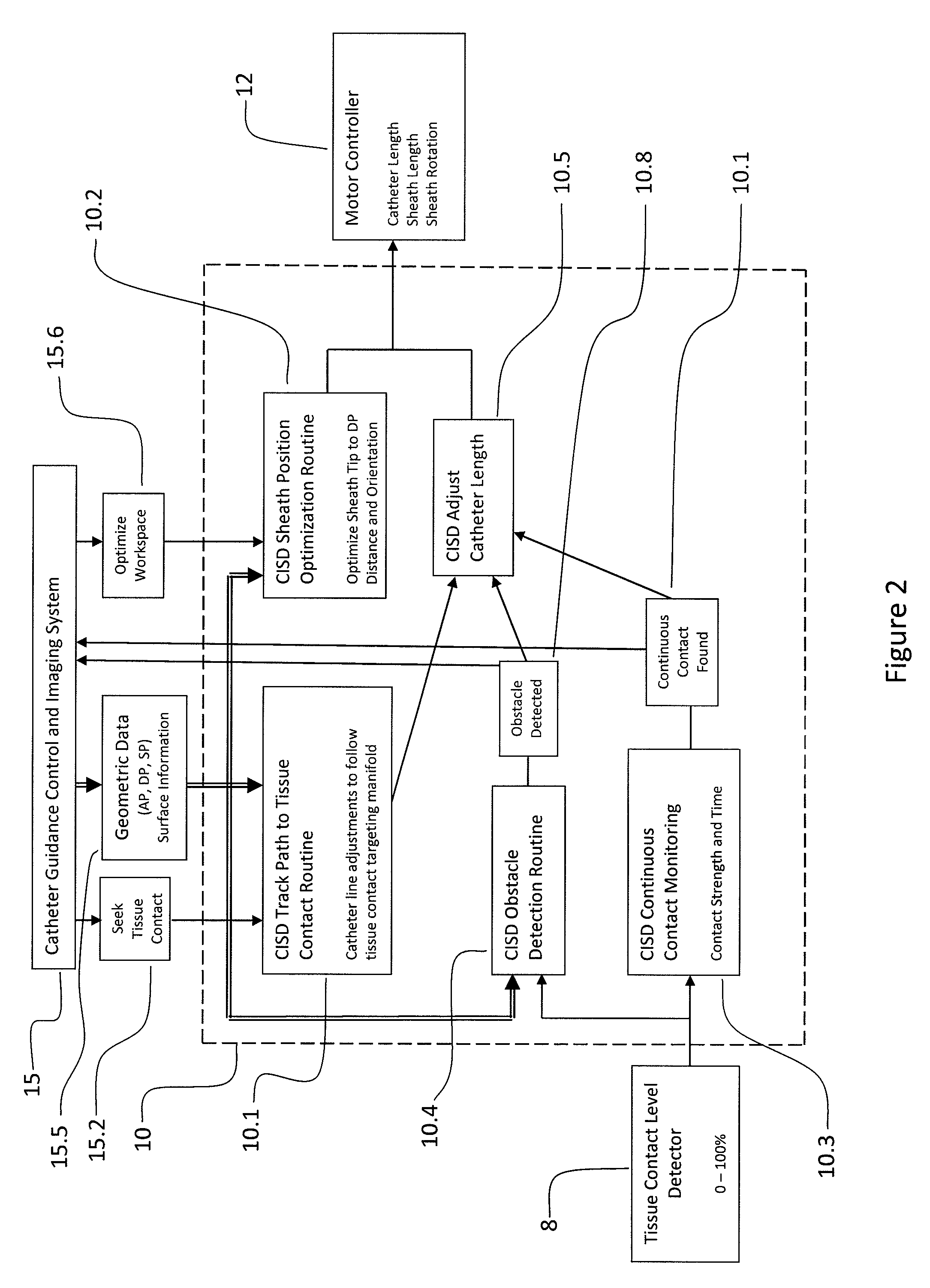System and method for a catheter impedance seeking device
- Summary
- Abstract
- Description
- Claims
- Application Information
AI Technical Summary
Benefits of technology
Problems solved by technology
Method used
Image
Examples
Embodiment Construction
[0056]FIG. 1 is a schematic diagram of the signals and systems used in tissue impedance seeking. A catheter 3 is inserted through a sheath (LAS introducer) 4 and into a patient 1. A catheter tip 3.1 is advanced into the patient and a catheter shaft 3.2 is connected within a CISD Mechanical Assembly 11 to a Catheter Shuttle 11.2. The proximal portion of the LAS sheath 4 is provided to a Sheath Shuttle 11.3. The proximal end of the catheter shaft 3.1 is connected to both the Tissue Contact Level Detector 8 and a Catheter Position Detection System (CPDS) 7 by the catheter electrical connector. The sheath position and orientation, SP 40, is also detectable by the CPDS 7, so the sheath 4 is also provided to the CPDS 7 by an electrical connector. The Catheter Position Detection System 7 uses the signals from the catheter and from the Catheter Position Detection System Patches7.3, placed on the patient 1, to determine catheter position and orientation, which is passed on to the Catheter Gu...
PUM
 Login to View More
Login to View More Abstract
Description
Claims
Application Information
 Login to View More
Login to View More - R&D
- Intellectual Property
- Life Sciences
- Materials
- Tech Scout
- Unparalleled Data Quality
- Higher Quality Content
- 60% Fewer Hallucinations
Browse by: Latest US Patents, China's latest patents, Technical Efficacy Thesaurus, Application Domain, Technology Topic, Popular Technical Reports.
© 2025 PatSnap. All rights reserved.Legal|Privacy policy|Modern Slavery Act Transparency Statement|Sitemap|About US| Contact US: help@patsnap.com



